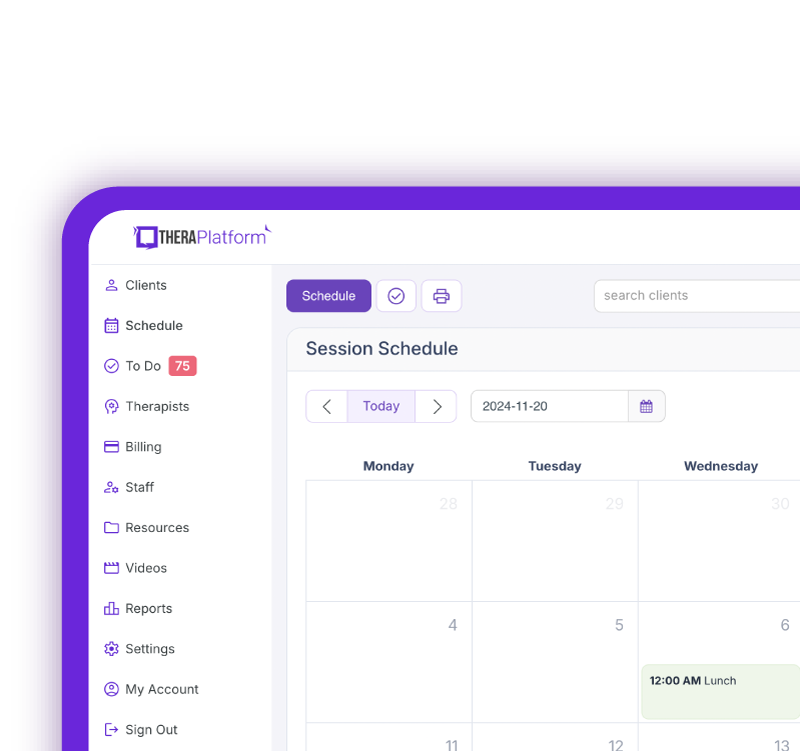ICD 10 Codes Occupational Therapy
JIA ICD 10

withJuvenile Idiopathic Arthritis ICD 10 is used by occupational therapists for an autoimmune disorder that causes inflammation, pain, stiffness, and swollen joints in children under 16. It typically causes inflammation and joint pain in hands, knees, ankles, elbows and/or wrists, and can impact other body parts as well.
Summary
- Juvenile Idiopathic Arthritis (JIA) is an autoimmune disorder in children under 16 that causes joint inflammation, pain, and stiffness, with varying subtypes affecting different joints and body systems.
- Occupational therapists play a key role in assessing physical, social, emotional, and functional impacts, using specialized evaluations like JAFAR, JAQQ, JAFAS, and JASI to guide treatment.
- Proper, subtype-specific ICD-10 coding for JIA is essential for accurate documentation, treatment planning, reimbursement, and interdisciplinary communication. Enrolling in an insurance billing course for therapists can help providers enhance their knowledge.
- By leveraging an EHR like TheraPlatform for efficient documentation and claim submission, therapists can tackle billing with ease.
→ Click here to enroll in our free on-demand Insurance Billing for Therapists video course [Enroll Now]
Symptoms for children with JIA can vary from minor to severe and can persist for a few months to years. JIA can affect child development and growth, vision, and joint damage. The exact cause of JIA is unknown, however, researchers believe that children with JIA have certain genes that are activated by a virus, bacteria or other external factors. There is no evidence that foods, toxins, allergies or lack of vitamins cause the disease.
Streamline your insurance billing with One EHR
- Claim batching
- Auto claims
- Automated EOB & ERA
- Real-time claim validation
- Real-time claim tracking
- Aging and other reports

Diagnostic criteria for Juvenile Idiopathic Arthritis
There are several different subtypes of JIA, which can be found below. Diagnosing JIA involves a series of tests, lab work, and/or imaging. A pediatrician may run a complete blood count panel, C-reactive protein, creatine, Rheumatoid factor, white blood cell count, genetic tests, and/or run X-rays, MRIs, or bone scans. If the eye is impacted, an ophthalmologist may run some tests as well.
Polyarticular JIA
- 5 or more joints are impacted
- May occur on both sides of the body/extremities including both small and larger joints
- Affects about 25% of children with JIA
Systemic JIA
- Joints, skin, and internal organs are impacted
- Includes a rash and 103-degree or higher fever that persists for 2 weeks.
- Affects about 10% of children with JIA
Oligoarthritis
- Most common type
- 1-4 joints are impacted
Psoriatic arthritis (PsA)
- Joint symptoms and a rash behind the ears and/or on the eyelids, elbows, knees, belly button, and scalp
- Skin symptoms may occur before or after joint symptoms appear
- May affect one or more joints, such as wrists, knees, ankles, fingers or toes
Enthesitis-relate
- Entheses is where the bone is attached to the muscle, tendons, or ligaments
- May impact hips, knees, feet, chest, elbows, fingers, and GI tract
- Joints impacted: Hips, knees, and/or feet, fingers, elbows, pelvis, chest, and/or lower back vertebrae
- More common in boys and typically appears in children between the ages of eight and 15
- Also known as spondyloarthritis
Undifferentiated
- Symptoms may not match up perfectly with any of the subtypes, but inflammation is present in one or more joints
Occupational therapy assessment for Juvenile Idiopathic Arthritis
Occupational therapists play a crucial role in the treatment of JIA, especially in helping children manage their pain, improve social participation, play skills, and overall physical function. Occupational therapists will evaluate strength, endurance, range of motion, swelling, pain, fine motor skills, gross motor skills, play skills, social skills, emotional regulation, and sensory preferences.
It is important to have a comprehensive picture of the child to gain a better understanding of how JIA impacts a child’s performance and participation in everyday life, specifically at home, school, and with peers. Based on the developmental stage and level of ability, therapists may administer JIA questionnaires.
Some JIA-specific questionnaires and assessments to better understand children with JIA include the following:
Juvenile Arthritis Functional Assessment Report (JAFAR)
- Assess the ability to perform physical tasks
- Age: 7-18 years
Juvenile Arthritis Quality of Life Questionnaire (JAQQ)
- Assesses motor skills, psychosocial function, general symptoms and level of pain
- Age 2-18 years
Juvenile Arthritis Functional Assessment Scale (JAFAS)
- Assesses ADLs considered important in children with JIA
- Age: 7-16 years
Juvenile Arthritis Functional Status Index (JASI)
- Functional ability assessment
- Age: 8-17 years
Watch this video to learn common insurance billing struggles and solutions
→ Start My Free Trial
→ Start My Free Trial
Juvenile Idiopathic Arthritis ICD 10
In occupational therapy, it is significantly important to document history, evaluation and assessment findings, goals, progress on goals, and communication amongst clients, caregivers, and other members of the healthcare team.
Using ICD-10 codes is a fundamental aspect of documentation. Currently, the ICD-10 database is still utilizing the term Juvenile Rheumatoid Arthritis. It is significantly important that therapists correctly document the proper subtype of JRA/JIA and use Juvenile Idiopathic Arthritis ICD 10 as it contributes to treatment planning, goal setting, and providing education.
The use of proper Juvenile Idiopathic Arthritis ICD 10 codes offer an improved ability to understand risk and severity. It is also vital to incorporate proper Juvenile Idiopathic Arthritis ICD 10 codes to ensure reimbursement, medical necessity, and continued care. In occupational therapy practice, the Juvenile Idiopathic Arthritis ICD 10 is a billable/specific code that can be used to indicate a diagnosis for reimbursement.
The following table has general Juvenile Idiopathic Arthritis ICD 10 codes. More specific codes with greater level of detail such as types of JRA/JIA and areas affected can be found on the ICD-10 database website.
It is important to utilize Juvenile Idiopathic Arthritis ICD 10 codes that are client-specific in occupational therapy practice as they improve the overall quality of care and management.
Juvenile Idiopathic Arthritis ICD 10 Code | Type |
|---|---|
M08.00 | |
M08.419 | Pauciarticular juvenile rheumatoid arthritis, unspecified shoulder |
M08.229 | Juvenile rheumatoid arthritis with systemic onset, unspecified. elbow |
M08.052 | Unspecified juvenile rheumatoid arthritis, left hip |
L40.51 | Distal interphalangeal psoriatic arthropathy |
* All Juvenile Idiopathic Arthritis ICD Codes from ICD10data.com
Pediatric intervention strategies
Intervention methods for JIA can involve a range of strategies depending on the level of severity and need of each client. It is important to remember that each child is unique and will have a different presentation of JIA and there is not a one-size fits all approach.
It is also important to have client-centered goals and treatment strategies to effectively manage and provide treatment for JIA. It is found that providing kids with age-appropriate physical movement focusing on improving strength and fitness, can positively impact their confidence, motivation, peer engagement, and overall quality of life.
Another component of exercise is to provide individualized range of motion (ROM) exercises that the child can do in daily activities to maintain joint mobility. These exercises may also be assigned as home programming. OTs may also create splints depending on the type, severity, and if necessary for the child. Splints may improve or maintain range of motion. They can help to reduce contractures. A hand splint also helps to reduce pain, swelling, or stress on the wrist or finger joints.
Practice Management + EHR + Telehealth
Manage more in less time in your practice with TheraPlatform

Treatment could also include adaptive aids or technology. The goal with adaptive aids is to minimize pressure on the joints and ideally shift the load to larger or more joints.
Examples of Adaptive aid can be found below.
- Adaptive eating utensils (e.g., thicker spoon handles)
- Dycem
- Elevated toilet seat
- Extended comb handles/long-handled bathing sponge
- Shoehorn
- Velcro on clothing and/or shoes.
- Wheelchairs
- Writing aids
Therapists will also focus on fine motor skills, gross motor skills, and the ability to perform ADL tasks such as getting dressed or tying shoes, as well as participating in school-related tasks. Breaking down tasks into smaller, more manageable steps can help children feel more accomplished and successful.
Collaborating with school professionals to set up the environment to optimize learning and provide necessary physical, time, or accessibility-type accommodations is important. Another focus of therapy could be on social-emotional management. It is found that kids and teens with JIA are more likely to get depressed because they are living with a chronic disease. Having strong support can provide emotional support during tough times.
Treatment strategies for social-emotional regulation could be focused on emotional awareness, cognitive behavioral therapy, mindfulness, breath work, and/or meditation.
Client-centered goals for Juvenile Idiopathic Arthritis
To promote motivation, active participation, and engagement in therapy, it is important to have meaningful and purposeful goals for treating JIA, as well as SMART goals. Focusing on client-centered goals that include the strengths, weaknesses, and unique attributes and preferences of the child will overall improve client outcomes.
One main component to consider during treatment and goal setting is the use of meaningful and motivating activities while also considering the developmental stage and ability of the client. It is also important to encourage self-advocacy by teaching clients to explain their wants, needs, and to provide opportunities for choices in order to have clients make appropriate decisions regarding their goals and therapy plan.
Providing education is another fundamental component of treatment planning and establishing goals. By equipping clients and caregivers with information, knowledge, support, and resources, caregivers and clients can become more empowered to manage and understand JIA. Therapists can also provide home programming, providing resources, connections for support groups, emotional-regulation strategies, and providing a comprehensive understanding of JIA. With a comprehensive and thorough approach, clients and caregivers can feel a sense of resiliency and self-empowerment, which overall contribute to positive client outcomes.
Overall, ensuring proper Juvenile Idiopathic Arthritis ICD code usage and documentation of JIA is essential due to the varying types and levels of severity. Proper documentation directly impacts treatment planning and establishing goals.
With appropriate Juvenile Idiopathic Arthritis ICD 10 coding, therapists have a better understanding of how to provide treatment modalities, manage restrictions and contraindications, if there are any, provide education to caregivers and clients, and monitor progress appropriately.
Appropriate Juvenile Idiopathic Arthritis ICD 10 coding, also contributes to adequate reimbursement, research, and interdisciplinary communication and collaboration. With adequate documentation, it overall contributes to improved client-centered care and positive outcomes for children with JIA.
Practice Management + EHR + Telehealth
Manage more in less time in your practice with TheraPlatform

How EHR and practice management software can save you time with insurance billing for therapists
EHRs with integrated billing software and clearing houses, such as TheraPlatform, offer therapists significant advantages in creating an efficient insurance billing process. The key is minimizing the amount of time dedicated to developing, sending, and tracking medical claims through features such as automation and batching.
What are automation and batching?
- Automation refers to setting up software to perform tasks with limited human interaction.
- Batching or performing administrative tasks in blocks of time at once allows you to perform a task from a single entry point with less clicking.
Which billing and medical claim tasks can be automated and batched through billing software?
- Invoices: Create multiple invoices for multiple clients with a click or two of a button or set up auto-invoice creation, and the software will automatically create invoices for you at the preferred time. You can even have the system automatically send invoices to your clients.
- Credit card processing: Charge multiple clients with a click of a button or set up auto credit card billing, and the billing software will automatically charge the card (easier than swiping!)
- Email payment reminders: Never manually send another reminder email for payment again, or skip this altogether by enabling auto credit card charges.
- Automated claim creation and submission: Batch multiple claims with one button click or turn auto claim creation and submission on.
- Live claim validation: The system reviews each claim to catch any human errors before submission, saving you time and reducing rejected claims.
- Automated payment posting: Streamline posting procedures for paid medical claims with ERA. When insurance offers ERA, all their payments will post automatically on TheraPlatform's EHR.
- Tracking: Track payment and profits, including aging invoices, overdue invoices, transactions, billed services, service providers.
Utilizing billing software integrated with an EHR and practice management software can make storing and sharing billing and insurance easy and save providers time when it comes to insurance billing for therapists.
Streamline your practice with One EHR
- Scheduling
- Flexible notes
- Template library
- Billing & payments
- Insurance claims
- Client portal
- Telehealth
- E-fax

Resources
TheraPlatform is an all-in-one EHR, practice management, and teletherapy software built with AI-powered notes for therapists to help them save time on admin tasks. It offers a 30-day risk-free trial with no credit card required and supports different industries and sizes of practices, including occupational therapists in group and solo practices.
More resources
- Therapy resources and worksheets
- Therapy private practice courses
- Ultimate teletherapy ebook
- The Ultimate Insurance Billing Guide for Therapists
- The Ultimate Guide to Starting a Private Therapy Practice
- Mental health credentialing
- Insurance billing 101
- Practice management tools
- Behavioral Health tools



